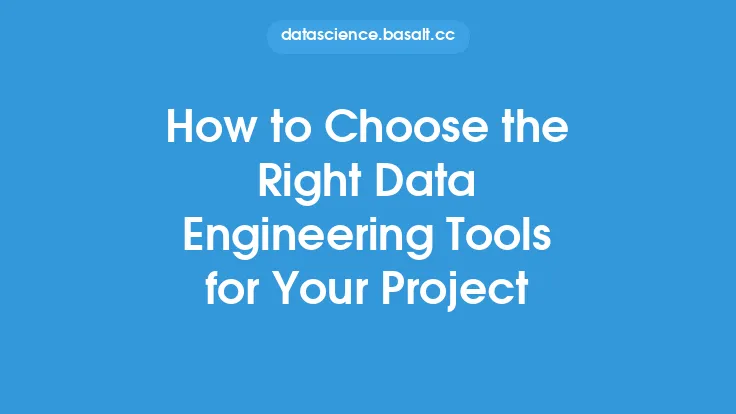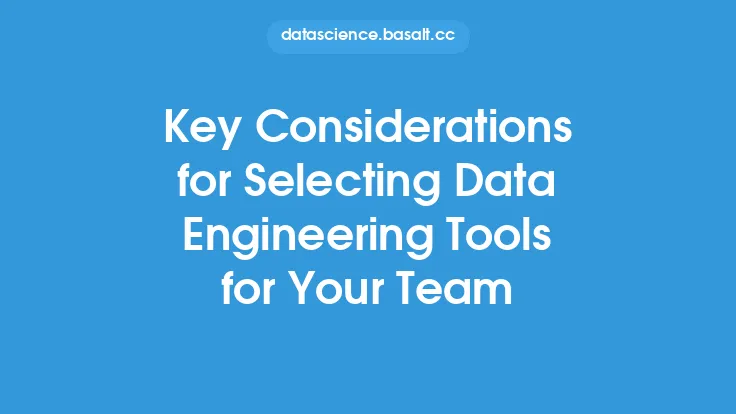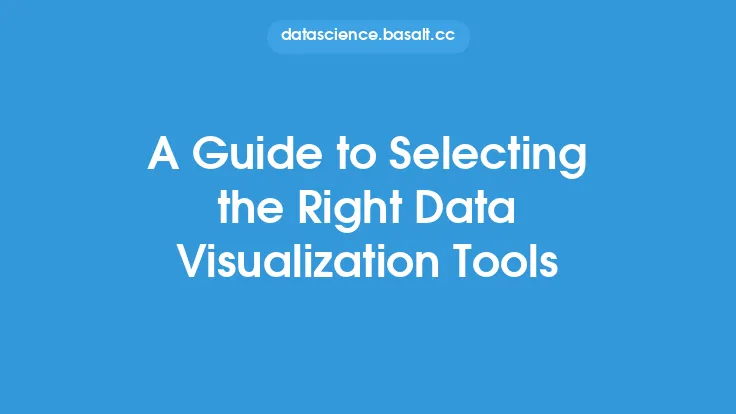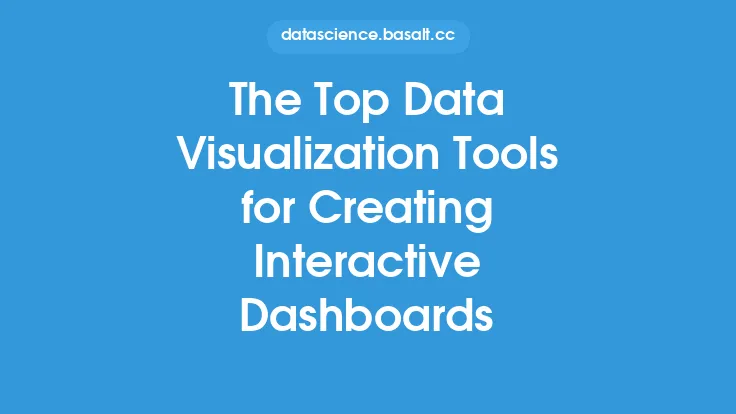When it comes to building a robust data pipeline, one of the most critical components is data ingestion. Data ingestion refers to the process of collecting, transporting, and processing data from various sources to a centralized location, such as a data warehouse or data lake, where it can be analyzed and used to inform business decisions. With the exponential growth of data, choosing the right data ingestion tool has become a daunting task for many organizations. In this article, we will delve into the world of data ingestion tools, exploring the different types, features, and considerations to help you make an informed decision.
Types of Data Ingestion Tools
There are several types of data ingestion tools, each designed to cater to specific use cases and requirements. Some of the most common types include:
- Batch Processing Tools: These tools are designed to handle large volumes of data in batches, typically on a scheduled basis. Examples include Apache NiFi, Apache Beam, and AWS Glue.
- Stream Processing Tools: These tools are designed to handle real-time data streams, processing data as it is generated. Examples include Apache Kafka, Apache Storm, and Apache Flink.
- Cloud-Native Tools: These tools are designed to work seamlessly with cloud-based data platforms, such as Amazon Web Services (AWS), Microsoft Azure, and Google Cloud Platform (GCP). Examples include AWS Kinesis, Azure Event Hubs, and Google Cloud Pub/Sub.
- Open-Source Tools: These tools are community-driven and offer a high degree of customization and flexibility. Examples include Apache Airflow, Apache Spark, and Presto.
Key Features to Consider
When evaluating data ingestion tools, there are several key features to consider. These include:
- Data Sources: The tool should be able to connect to a variety of data sources, including databases, APIs, files, and messaging queues.
- Data Formats: The tool should be able to handle different data formats, such as CSV, JSON, Avro, and Parquet.
- Scalability: The tool should be able to handle large volumes of data and scale horizontally to meet growing demands.
- Performance: The tool should be able to process data in real-time or near real-time, depending on the use case.
- Security: The tool should provide robust security features, such as encryption, authentication, and access control.
- Integration: The tool should be able to integrate with other data tools and platforms, such as data warehouses, data lakes, and business intelligence tools.
Considerations for Choosing a Data Ingestion Tool
Choosing the right data ingestion tool requires careful consideration of several factors. These include:
- Business Requirements: The tool should align with the organization's business requirements, such as data volume, velocity, and variety.
- Technical Requirements: The tool should meet the technical requirements of the organization, such as scalability, performance, and security.
- Cost: The tool should be cost-effective and provide a good return on investment (ROI).
- Support: The tool should have good community support, documentation, and customer support.
- Flexibility: The tool should be flexible and adaptable to changing business requirements and technical landscapes.
Evaluating Data Ingestion Tools
Evaluating data ingestion tools requires a thorough and structured approach. This includes:
- Proof of Concept (POC): Conducting a POC to test the tool's features, performance, and scalability.
- Comparison: Comparing the tool with other similar tools and technologies.
- Case Studies: Reviewing case studies and success stories from other organizations that have implemented the tool.
- Vendor Evaluation: Evaluating the vendor's reputation, support, and roadmap for the tool.
- Total Cost of Ownership (TCO): Calculating the TCO of the tool, including licensing, maintenance, and support costs.
Best Practices for Implementing Data Ingestion Tools
Implementing data ingestion tools requires careful planning, execution, and monitoring. Some best practices include:
- Define Clear Requirements: Defining clear business and technical requirements for the data ingestion tool.
- Choose the Right Tool: Choosing the right data ingestion tool that meets the organization's requirements.
- Design a Scalable Architecture: Designing a scalable architecture that can handle growing data volumes and velocities.
- Monitor and Optimize: Monitoring and optimizing the data ingestion process to ensure performance, reliability, and security.
- Provide Training and Support: Providing training and support to users and administrators to ensure successful adoption and usage of the tool.
Conclusion
In conclusion, choosing the right data ingestion tool is a critical decision that requires careful consideration of several factors, including business requirements, technical requirements, cost, support, and flexibility. By evaluating different types of data ingestion tools, considering key features, and following best practices for implementation, organizations can build a robust data pipeline that meets their needs and drives business success. As the data landscape continues to evolve, it is essential to stay informed about the latest trends, technologies, and best practices in data ingestion to ensure that your organization remains competitive and data-driven.





